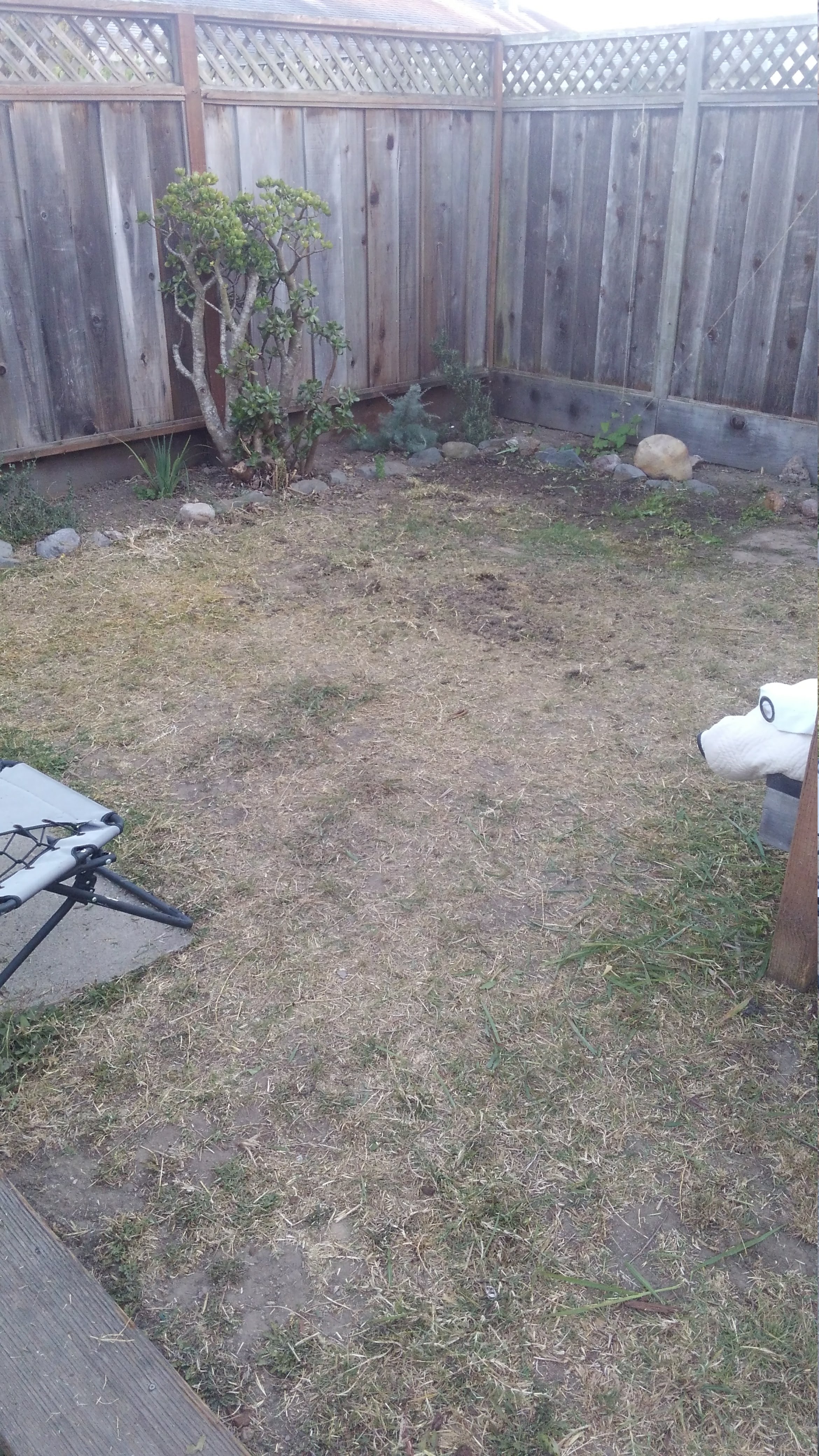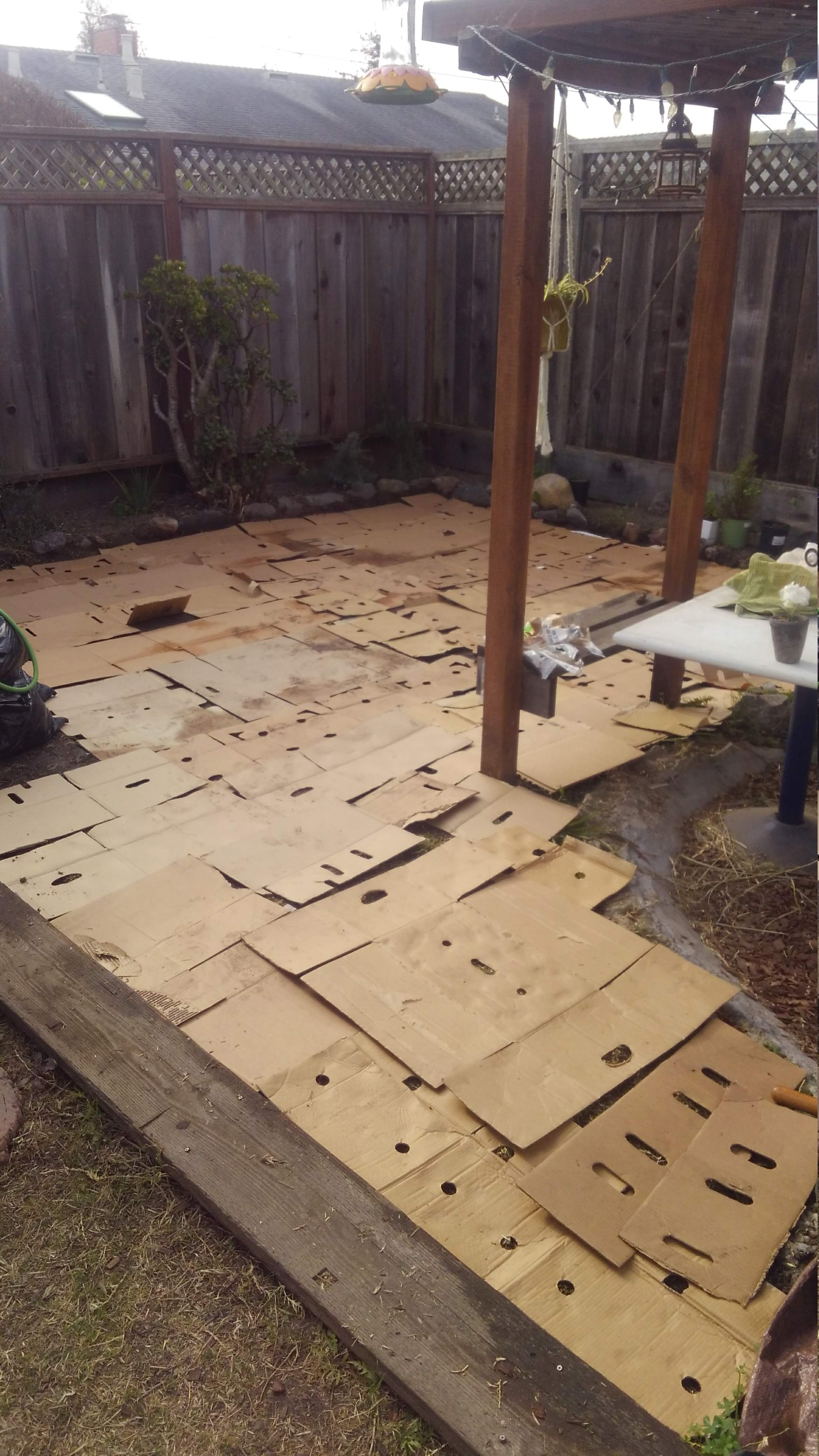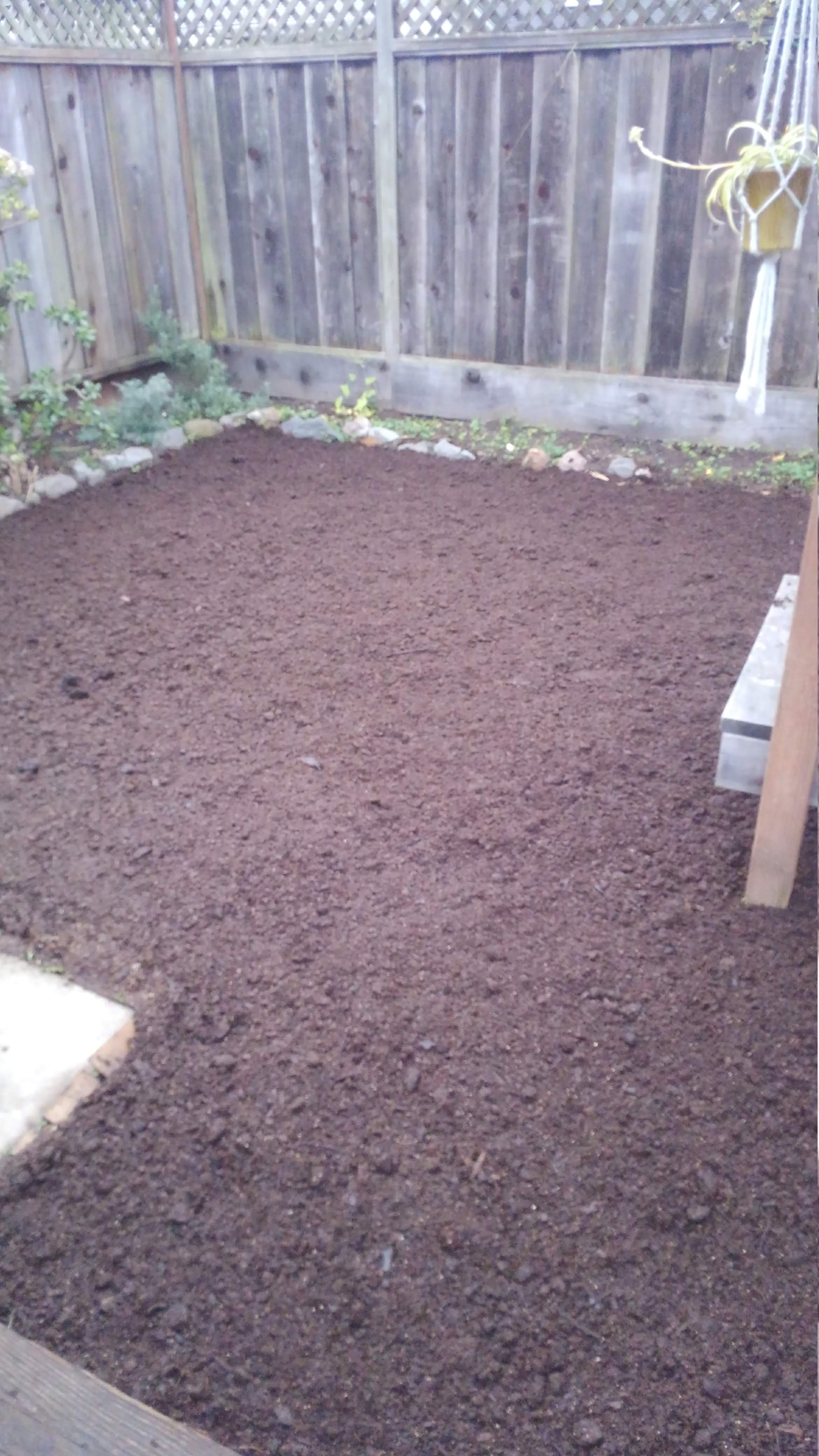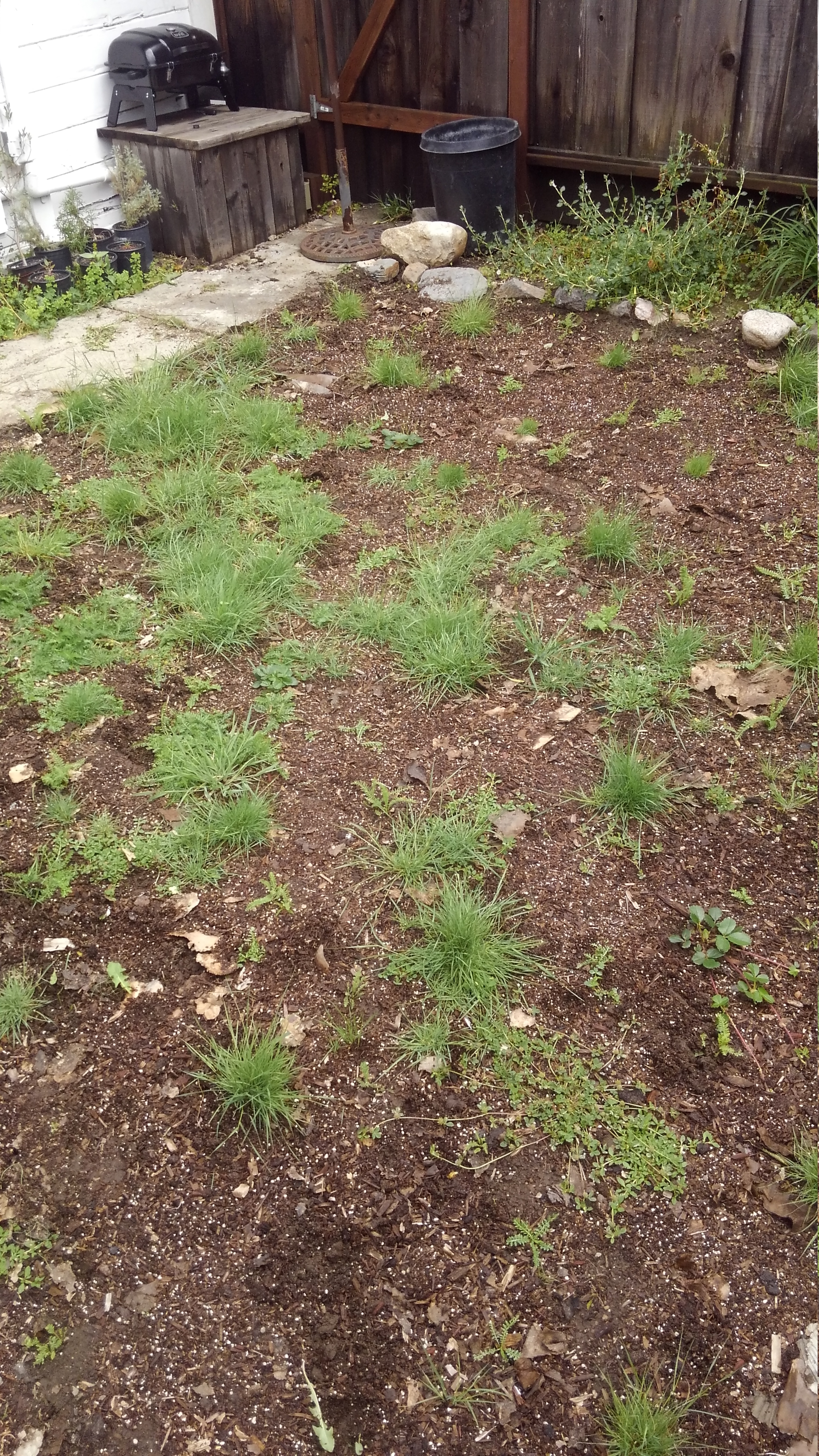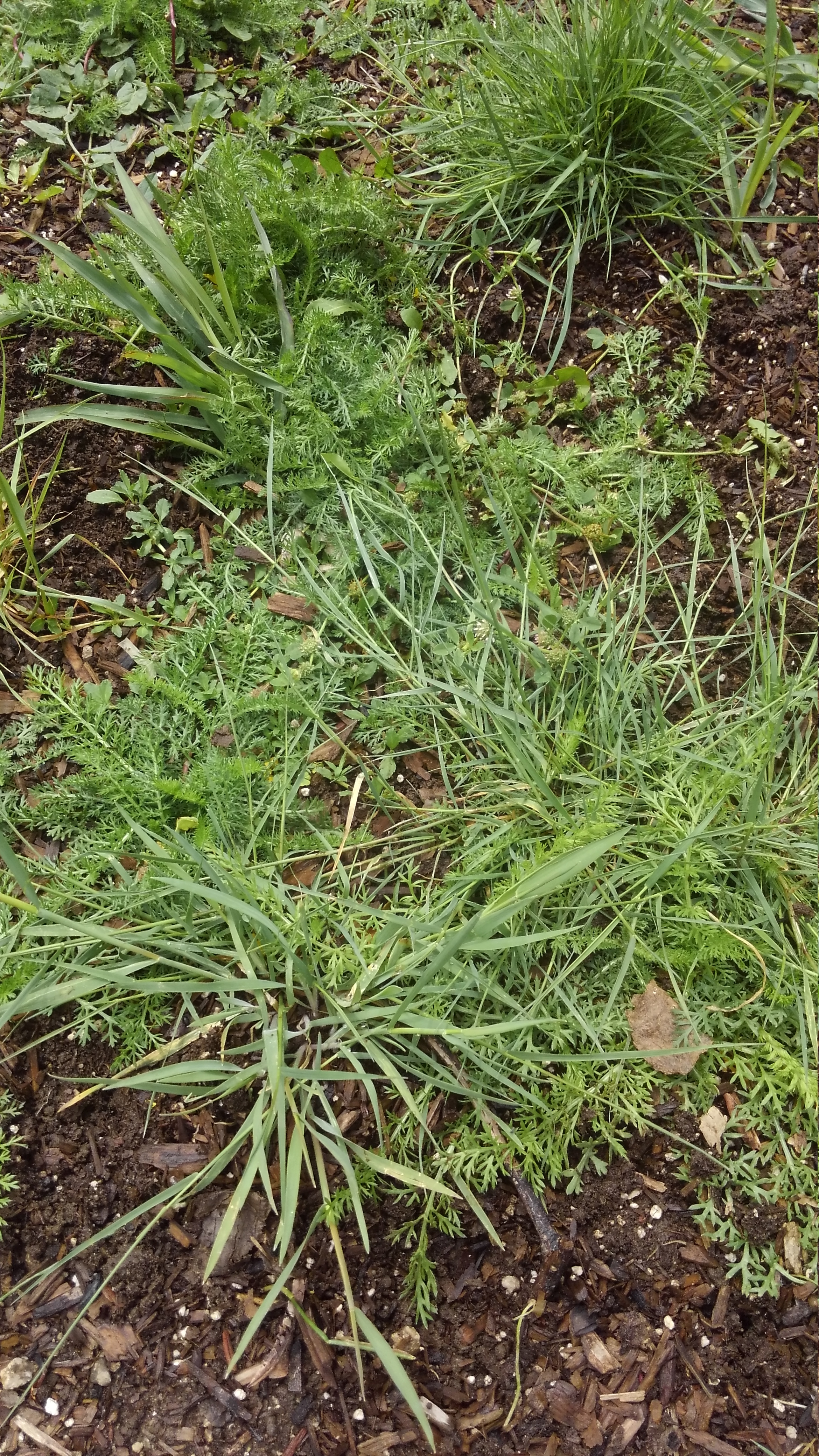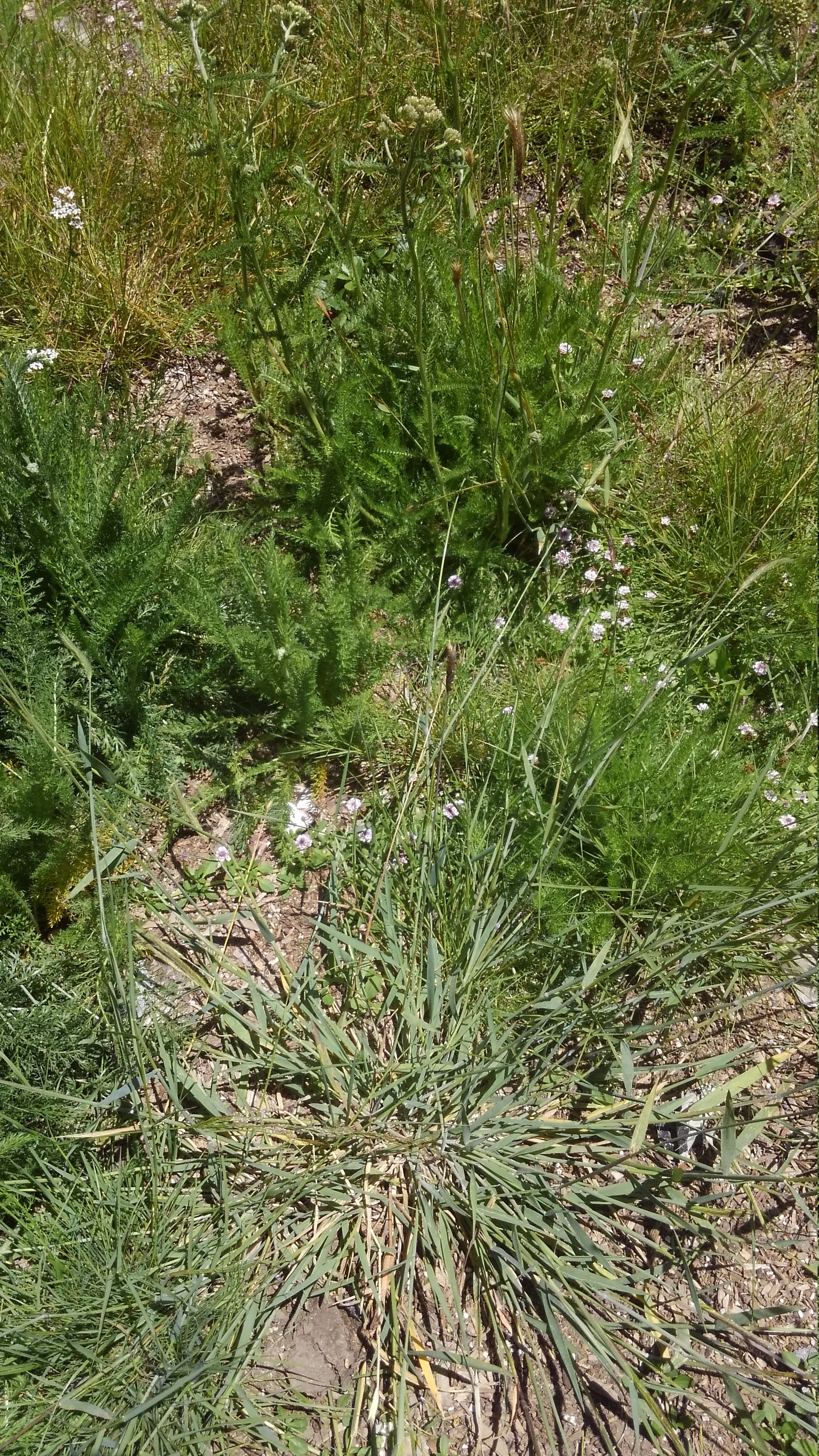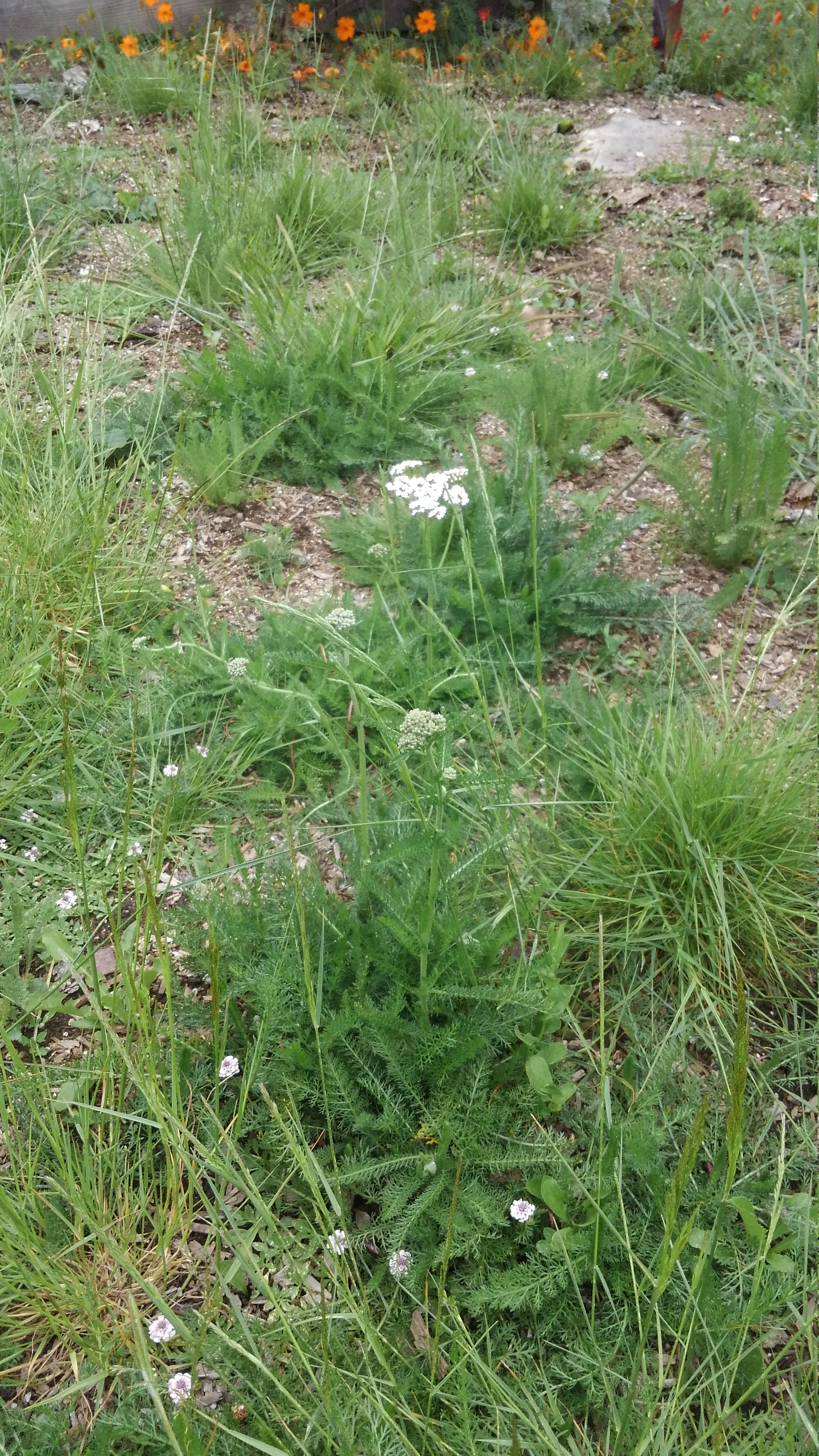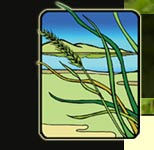Creating a Coastal Meadow/Lawn Alternative
Story and photos by Zach Jordan
I started with an abandoned sod lawn in Capitola that had been taken over by Hypochaeris radicata (hairy cat's ear), Taraxacum officinale (dandelion), Cynodon dactylon (Bermuda grass), Oxalis pes-caprae (sourgrass, Bermuda buttercup). In the summer/fall it was quite ugly; just a sparse cover of dry weeds providing no value to wildlife or people. Ultimately, not a meadow/lawn that looked pleasant to lay on or look at.
In the late fall of 2018, I began my native meadow/lawn restoration project. I collected some cardboard boxes for free and covered as much area as I could. If I were able to do it again, I would have used cardboard that didn't have holes in it and use more boxes so that there was more overlap on the edges. Then I added about 1" of topsoil on top of the cardboard (about half was free horse manure and the other half recycled potting soil). Again, if I were to do it again, I would use a thicker layer of topsoil, between 6” and 12" seems ideal. Before the rains I seeded it with yarrow, Trifolium wormskioldii (perennial clover), and Agrostis pallens (seashore bentgrass). Then I waited for the seeds to germinate and kept a close eye on the weeds (Oxalis was the most aggressive). Slowly throughout the winter I planted the following plants from Central Coast Wilds: Agrostis pallens, Achillea millefolium (common yarrow), Phyla nodiflora (lippia), Fragaria chiloensis (Beach strawberry) and Trifolium wormskioldii. The container plants were nice for filling in the empty patches quickly. After the main seeding and planting phase, I kept a weeding schedule for the unsheet mulched areas by sweeping through the entire area and removing weeds by hand about once every 2-3 weeks (mainly to make sure the Oxalis pes-caprae did not flower, which is generally the same time that they will produce more bulbils). The weeding was most intense during the winter and spring, and was much less during the summer and fall, even with a couple mid-summer/late fall waterings.
The War on Weeds is far from over, but I have seen tremendous progress within just one year. Just recently, the Oxalis pes-caprae started to reemerge, however, it is clear that it is not as aggressive as last year. I believe this can be attributed to weakening the underground bulbs last year by pulling aboveground vegetation, and it is now competing with the natives that are establishing. I plan to add some Carex tumulicola (foothill sedge) this winter to continue to increase diversity. The lawn was mostly green all summer and fall and only needed to be irrigated a couple times during the hot, dry months for establishment. So far my mission to create a drought-tolerant meadow-y lawn that can handle moderate disturbance and use has been a success.
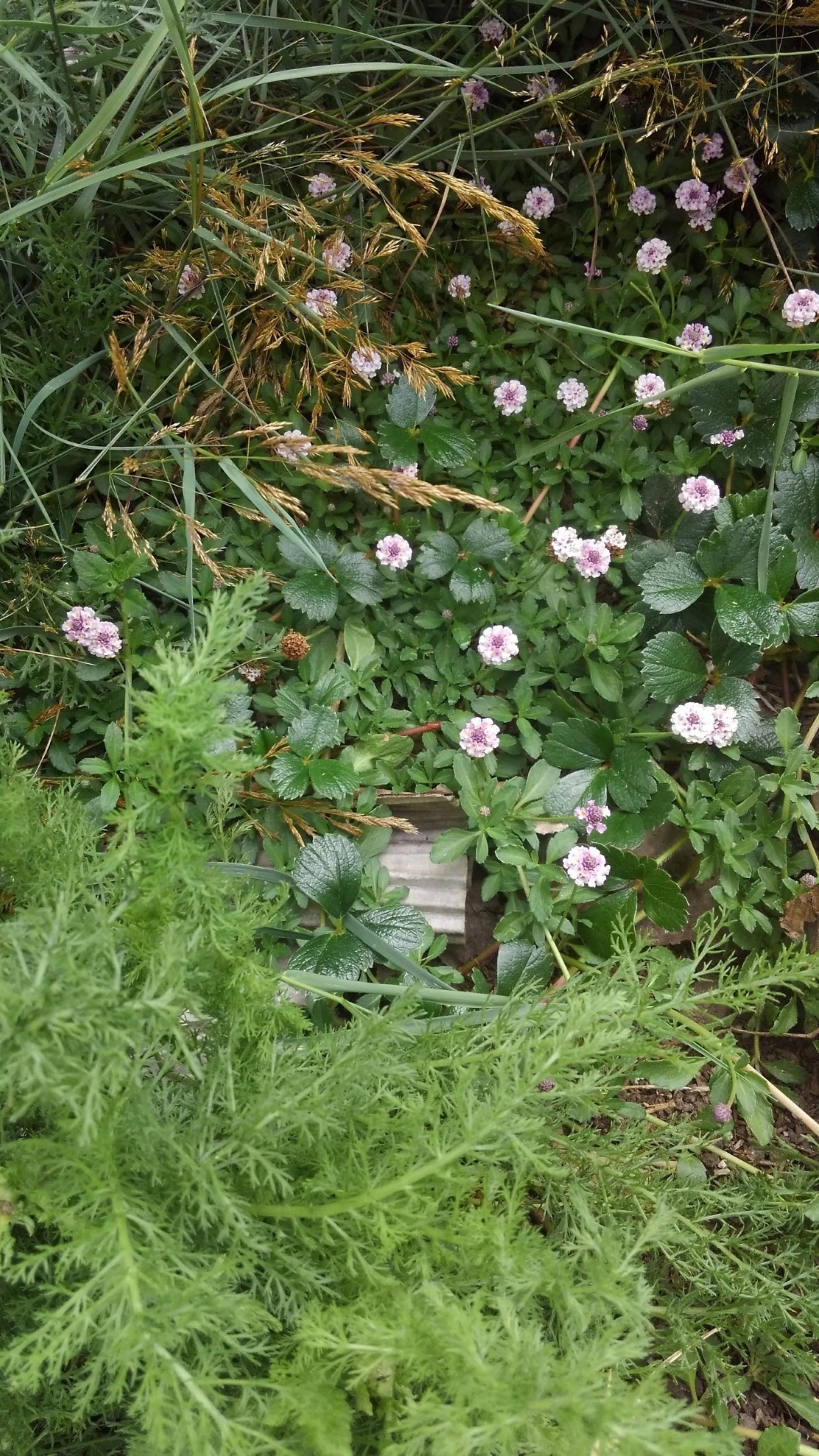
Photos of the native lawn replacement in progress
